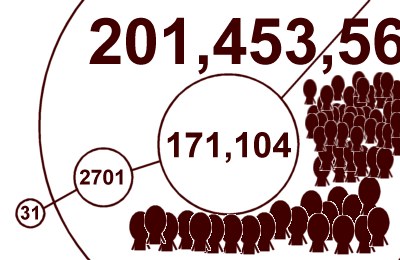In the latter part of my university career I met someone from another part of the country who had taken an entirely different degree course at roughly the same time as me, but whom I’d never bumped into at university itself. In fact, it wasn’t until we both ended up working in a small town in the USA by sheer coincidence that we mat in the first place. What was odd though was that we seemed to know a lot of the same people. And, if we didn’t know the same people we knew people who knew them and so on.
At the time, neither of us had heard of the six degrees of Kevin Bacon, or the whole concept of degrees of separation, idea. In fact this was 20 years ago and I don’t think that game had even been invented. We thought we’d stumbled on a new theory and began extrapolating wildly about how with just a few connections everyone in the world might be interconnected. This was at a time before even web 1.0 too, let alone web 2.0, so the whole idea of extensive online networking was yet to be born.
Anyway, we still keep in touch and are occasionally dumbfounded by the apparently supernatural connections that seem to crop up on a regular basis. For instance, my friend was chatting in a pub with a group of friends and some “new” people in the social circle a few years back. Conversation turned to travel, my friend mentioned her job in the USA, and one of the new people in the circle mentioned knowing someone who had done the same job, at roughly the same time. The new person my friend later related was my wife’s sister and those two are now best friends. A similar coincidence occurred to my own sister who met someone “new” to her social circle (again, in a pub, is there a theme here, do you think?) who turned out to know both me and my friend from some other place. I could go on…
Anyway, as many people will know this idea of everyone in the world being connected within so many friends, relatives, and acquaintances was already well known even 20 years ago and well before Kevin Bacon started acting. Seemingly, it was Guglielmo Marconi, developer of radio communication, who in his 1909 Nobel speech is thought to be the first person to suggest the magic number 6 (actually 5.83) as being somehow pertinent in connecting everyone together, although he was referring to a network of radio stations to provide global coverage.
In Stanley Milgram’s so-called “small world experiment”, he attempted to measure the connectivity of Americans to determine whether there was a separation factor. Although he never referred to the “six degrees of separation”, Milgram did discover that only a small number of connections is needed to interlink the entire population. It turns out that, as with a network, such as the World Wide Web, there are several large hubs, people or portals with a huge number of connections on which the connectivity of all those billions of websites and people hang.

It’s quite unlikely that without the advent of electronic communication, we would find the connectivity between all 6,647,380,082 people to be such a small number. I was musing on this subject while adding a new friend to my LinkedIn and Facebook accounts. I have not been very active on LinkedIn and have just 31 connections on that online networking site. However, those 31 contacts have a total of 2700+ connections of their own, and if I move along the degrees of separation another notch, there would be 171,000+ contacts of contacts’ contacts. Just four degrees of separation would bring me into contact with almost 20 million people, five degrees would be almost 2 billion.
Within 6 degrees of separation I could connect with 200 billion people, which is obviously going to require at least one new address book. If you’ve got more LinkedIn contacts than my small cluster, just think how many people you could connect to…oh…wait a minute…
There is, however, a theory, well supported by anthropology, that our brains were wired by evolution to cope with a mere 150 close contacts. That’s 150 people you’d know and “love”. The theory may explain why hunter-gatherer villages topped out at around that population size, why certain groups, such as the Hutterites, split their communities once they reach this size, and have done for centuries, and maybe even why fighting groups work best at fewer than 200 members. You simply haven’t got the brain power to really care about more than that number of people, because you wouldn’t be able to keep track of all the relationships between the group members if there were more.
Maybe it’s time to trim down those friends lists if you’ve got several thousand twitter contacts. You can only really call close a limited number of people, according to this theory. That said, humans are still evolving, maybe there will be some reproductive advantage to having thousands of virtual friends should environmental pressures change in coming years. By the way, I’m yet to find a personal connection with Kevin Bacon.
